Blood Urea Nitrogen, BUN, or Urea Nitrogen (BUN/Creatinine ratio)
Sample
- This is done on the serum of the patient.
- No special preparation is needed.
Precautions
- If there is Fluoride that will inhibit Urease reaction.
- Avoid hemolysis.
- Protein intake will affect BUN. A low protein diet will give low BUN.
- A high protein diet or nasogastric tubing will increase BUN.
- Keep in mind muscle mass which is more in males than females and children.
- Overhydrated patients will dilute the BUN and gives a lower value.
- The dehydrated patient will concentrate BUN and gives high value.
- GI bleeding can cause an increase in BUN level.
- Advanced pregnancy may increase the BUN level.
- Drugs increasing the BUN level are cephalosporin, indomethacin, gentamicin, polymyxin B, rifampicin, bacitracin, neomycin, tetracycline, thiazide diuretics, and aspirin.
- There are drugs that decrease the BUN level are streptomycin and chloramphenicol.
Indication
- To assess renal function.
- As a routine test in the patient with dialysis.
- To assess liver function.
- This may be part of the routine test.
- In patients:
- Has nonspecific symptoms.
- During the hospital stay.
- Prior to some drug therapy.
- Acutely ill patients admitted in an emergency.
Pathophysiology
- Blood urea molecule: O = C = ( NH2 )2 .
- Urease enzyme can split urea into ammonia and carbon dioxide.
- The molecular weight of urea = 60 grams
- Each molecule contains nitrogen = 28 grams. This is called blood urea nitrogen (BUN).
- While in the SI unit this is meaningless because it is reported as mmol/L.
- The serum concentration of 28 mg/dL of urea – nitrogen is equivalent to 60 mg/dL of urea or 10 mmol/L of urea or urea-nitrogen in SI units.
- Proteins cannot be stored in the body when these are in excess then surplus amino acids are catabolized for energy.
- Breakdown of the proteins and nucleic acid gives rise to a non-protein nitrogenous compound in the blood and these are urea, amino acids, urates, ammonia, and creatinine.
- Amino acids are converted into ammonia, CO2, H2O, and energy.
- While ammonia forms urea which is excreted into the urine.
- Urea is water-soluble and is a waste product and excreted in the urine.
- Urea concentration in the glomerular filtrate is the same as in the plasma.
- Under normal conditions, 40% of the urea filtered is reabsorbed in the tubules.
- Blood urea nitrogen is the main waste product of protein metabolism.
- Urea forms in the liver with CO2 and is the final product of protein metabolism.
- Urea is freely filtered and then partially absorbed by the nephron.
- The BUN is used as the index of glomerular function in the production and its excretion of urea.
- Urea reabsorption is increased in hypovolemia so BUN will underestimate Glomerular filtration rate (GFR) and more in hypovolemia.
- BUN measures the nitrogen part of the urea.
- This BUN or urea excreted through the kidney in the urine.
- The measurement of urea nitrogen gives an idea of the ratio between excretion and production of urea.
- In the liver amino acids are catabolized and free ammonia is produced.
- Ammonia molecules combine to form urea.
- The urea through blood goes to the kidney and excreted in the urine.
- So BUN depends upon the metabolic function of the liver and excretory function of the kidneys.
- The BUN is directly related to the metabolic function of the liver and excretory function of kidneys.
- In chronic renal diseases, the BUN level correlates better than creatinine with the sign and symptoms of the patient.
- As the synthesis of BUN depends upon the liver so patients with severe primary liver disease will have decreased BUN.
- In combined liver and renal disease as in hepatorenal syndrome, the BUN may be normal because of poor liver function resulting in decreased formation of urea.
- Overall the BUN is less accurate than creatinine for renal diseases.
- A high protein diet may increase the BUN and low protein intake may decrease its level.
- Blood urea nitrogen and creatinine ratio also give the idea about the renal, pre-renal, or post-renal diseases.
| Clinical condition | BUN |
| Primary liver disease | decreased |
| Combined liver and kidney disease (Hepatorenal syndrome) | normal |
| Dehydration | increased |
| Overhydration | decreased |
Kidneys Dysfunction May Show:
- The patient may have edema around the eyes, legs, abdomen, and wrist.
- There is a history of fatigue, poor appetite, lack of concentration, and disturbed sleep.
- There may be a flank pain, in the kidneys area.
- There may be burning urination, abnormal discharge, and increased frequency.
- There is a decrease in the amount of urine.
- The urine is bloody or coffee-colored and foamy.
- There may be hypertension.
NORMAL
Source 2
- Urea = 20 to 40 mg/dl
- BUN
- Blood urea nitrogen (BUN) = 10 to 20 mg /dl
- Children (BUN) = 5 to 18 mg/dl
- Infants = 5 to 18 mg/dL
- Newborn = 3 to 12 mg/dL
- Cord blood = 21 to 40 mg/dL
- Elderly people may have a higher level than the adult.
Source 1
| Age | Urea nitrogen mg/dL |
| Cor blood | 21 to 40 |
| Premature one week | 3 to 25 |
| <1 year | 4 to 19 |
| Infant/child | 5 to 18 |
| 18 to 60 year | 6 to 20 |
| 60 to 90 | 8 to 23 |
| >90 years | 10 to 31 |
Source 3
- Adult = 10 to 20 mg/dL
- Elderly people have a higher value
- Cord blood = 21 to 40 mg/dL
- Newborn = 3 to 12 mg/dL
- Infants = 5 to 18 mg/dL
- Child = 5 to 18 mg/dL
The level above 100 mg/dl is the critical value indicating severe renal dysfunction.
Increased Urea (BUN) Azotemia Seen In:
A. Impaired Renal Function:
Prerenal Causes:
- congestive heart failure and Myocardial infarction (CHF).
- Salt and water depletion
- Shock
- Stress
- Acute MI
- Hemorrhage into GI tract
- Dehydration.
- excessive protein catabolism.
- Burn.
B. Chronic Renal Diseases:
Renal Causes
- Glomerulonephritis (GN).
- Pyelonephritis (PN).
- Acute tubular necrosis.
- Renal failure.
- Diabetes mellitus with ketoacidosis.
- Anabolic steroids use.
- Nephrotoxic drugs.
C. Urinary Tract Obstruction:
Postrenal Causes
- Ureteral obstruction from stones, tumors, or congenital abnormality.
- Bladder outlet obstruction from prostatic hypertrophy, cancer.
- Bladder / urethral congenital abnormality.
Decreased Urea (BUN) Seen In:
- Liver failure.
- Malnutrition, and low protein diet.
- Impaired absorption of Celiac disease.
- Syndrome of inappropriate antidiuretic hormone secretion.
- Pregnancy.
- Overhydration.
- Nephrotic syndrome.
Effect Of Drugs And Other Condition On A BUN:
- Some of the drugs may cause a decrease in BUN like Dextrose infusion, Phenothiazine, and Thymol.
- Increased BUN levels may be seen in late pregnancy and infancy because of increased use of proteins.
BUN/Creatinine Ratio:
- The normal BUN/creatinine ratio is around 10:1.
- BUN/creatinine ratio in the normal range, in the case of raised BUN and creatinine. This will suggest intrarenal disease:
- Glomerulonephritis.
- Tubulointerstitial nephritis.
- When the BUN / Creatinine ratio is raised will suggest:
- Prerenal azotemia.
- Postrenal azotemia.
- These conditions may be seen in hypovolemia or hypotension.
- BUN/creatinine ratio decreased is very rare and this may be seen in:
- Protein deficiency in the diet.
- In severe liver disease.


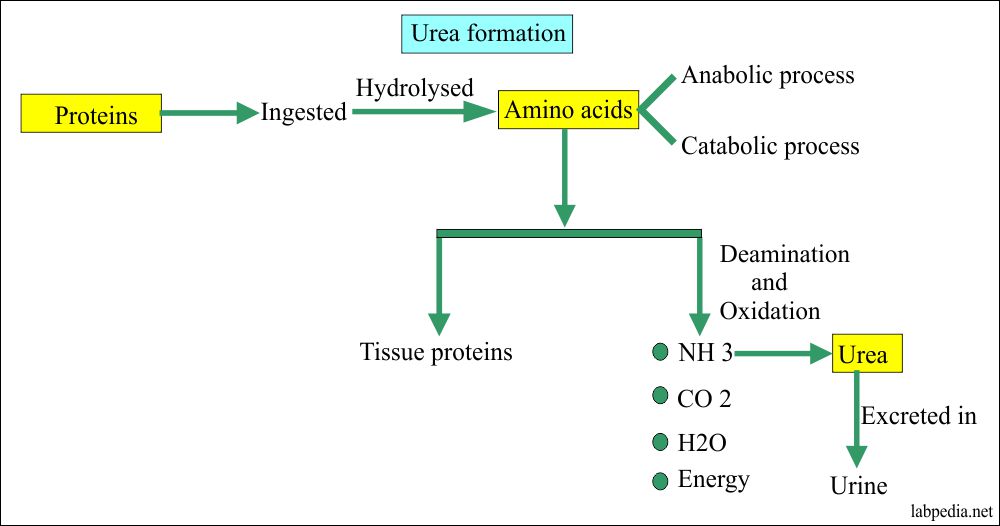
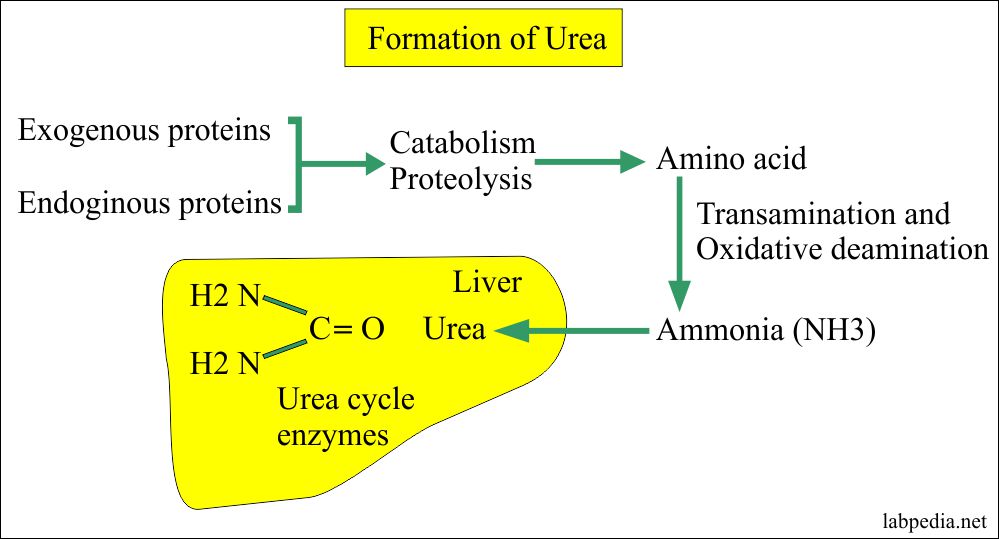
-3.jpg)
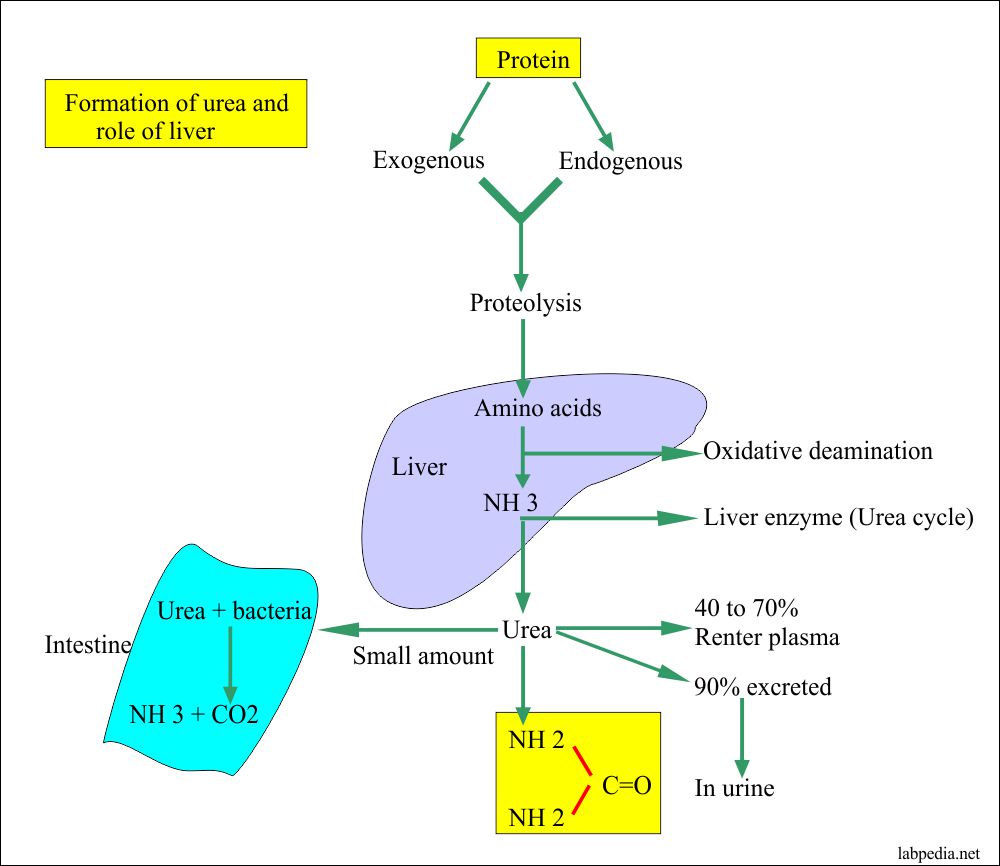
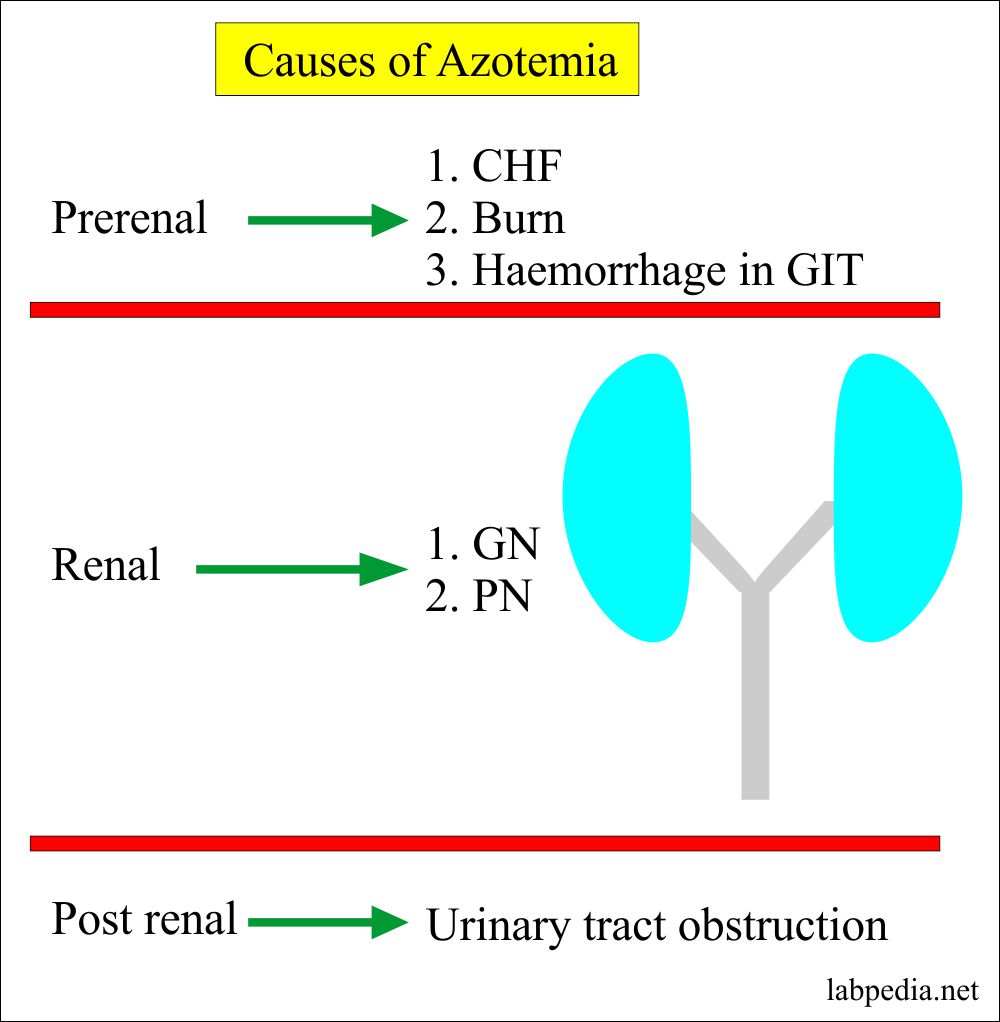
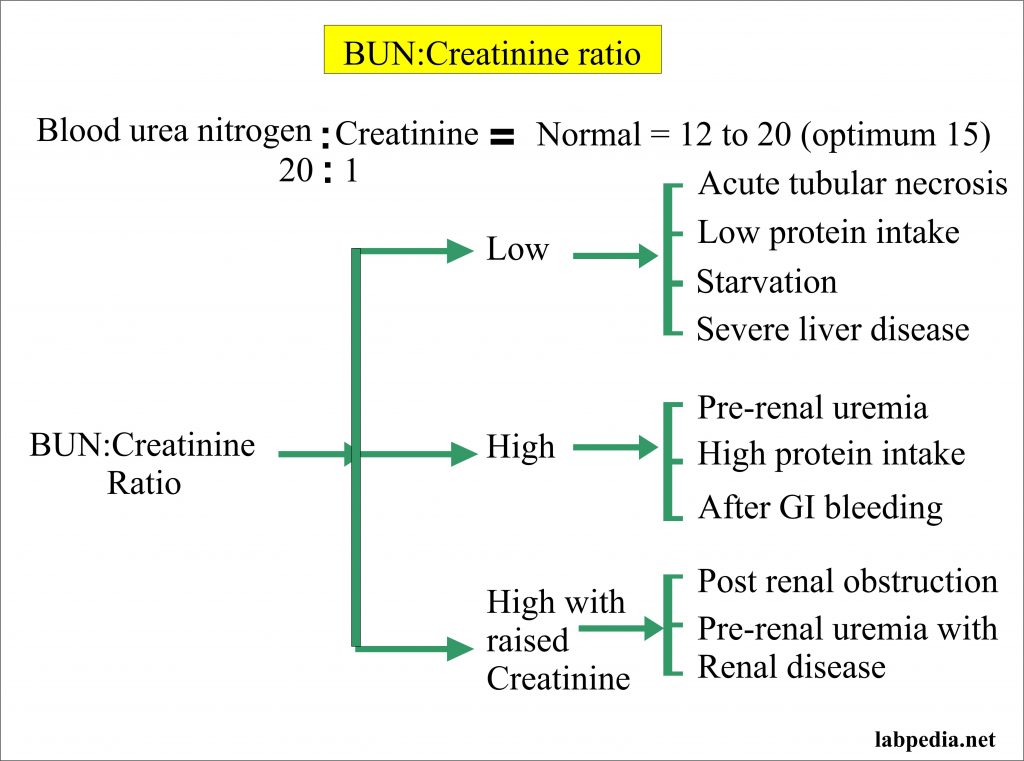








0 Comments